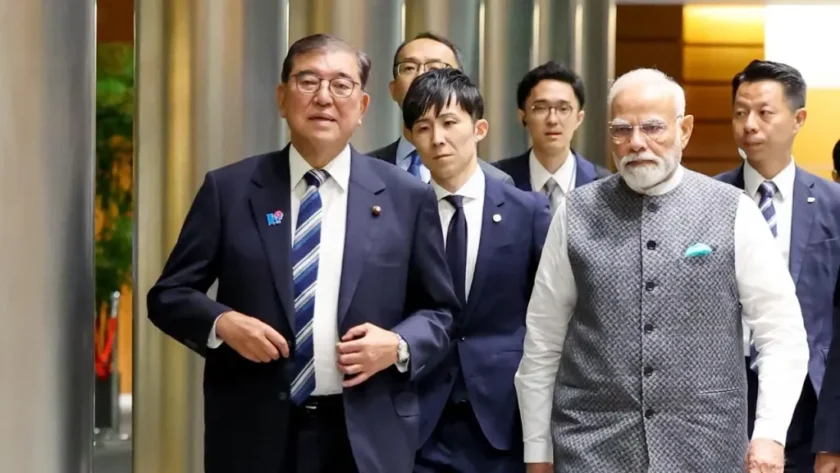Hasan Yaqoob: Public Policy Strategist | Co-Chairman, ASSOCHAM Uttar Pradesh
Lucknow: The announcement by the United States to impose a 25% tariff on certain imports from India, effective from August 1, 2025, is undoubtedly a significant development from a trade perspective.
Uttar Pradesh, which has made remarkable progress in recent years in the fields of exports, industrial output, and investment, is likely to feel the direct impact of this global policy shift. Sectors that are relatively more dependent on the American market—such as handicrafts, textiles, leather, ready-made garments, and pharmaceuticals—require a measured and strategic policy response.

Key Export Sectors of Uttar Pradesh and Potential Impact:-
In 2024, Uttar Pradesh exported goods worth approximately ₹18,000 crore (USD 2.2 billion) to the United States. Estimated contributions include:
• Rs 4,500 crore (25%) from textiles and ready-made garments
• Rs 3,200 crore (18%) from the carpet industry
• Rs 2,600 crore (15%) from handicrafts and metalware (notably from Moradabad)
• Rs 1,800 crore (10%) from the leather and footwear sector
• Rs 1,500 crore (8%) from pharmaceuticals and healthcare products
With these products now facing an additional 25% duty, American importers are unlikely to absorb the higher costs. Experts estimate that in the coming two quarters, total exports from Uttar Pradesh to the U.S. could decline by 12% to 18%.
This could translate to deferred or diverted export orders worth ₹2,000 to ₹3,200 crore, potentially being redirected to competing countries such as Bangladesh, Vietnam, and Turkey.
Micro and Long-Term Effects:
The MSME sector, which contributes nearly 80% of Uttar Pradesh’s total exports, may be the first to feel the pinch.
Cities such as Lucknow, Moradabad, Varanasi, Bhadohi, and Agra collectively host more than 25,000 export units, with an estimated 25–30% either directly or indirectly dependent on American orders.

If the tariff regime persists for an extended period, short-term job uncertainty may arise for around 50,000 to 70,000 workers.
Recognizing Opportunity in Maturity:
1. Exploring New Markets
In 2024, India’s exports to the Middle East and Latin America grew at an impressive rate of 18%. Products from Uttar Pradesh have been gaining popularity in these regions. The current tariff scenario is a signal to reduce overdependence on the U.S. and diversify into emerging markets.
2. Product Innovation and Branding
When the cost of a product rises, repositioning it into the premium segment can be a viable strategy. Uttar Pradesh’s GI-tagged products can still thrive despite tariffs if they are marketed as luxury gifts, heritage crafts, or exclusive brand offerings.
3. Policy Support and Collaboration
This moment offers the state government a vital opportunity to extend interest subsidies, market expansion grants, and logistical support to exporters. These measures could ease their transition into newer, less price-sensitive markets.
The Road Ahead: A Shift in Perspective from Challenge to Transformation :-
There is no doubt that this tariff presents a trade challenge. But global commerce has long been shaped by tariff tensions and policy maneuvering. The real question is how we respond—what strategies we adopt and how we reposition ourselves.
With its rich artisanal tradition and industrial capabilities, Uttar Pradesh has the potential to convert this disruption into a trade transformation. With the right policy interventions and business strategies, this 25% tariff could become a turning point—propelling Uttar Pradesh to a more diversified, competitive, and self-reliant future in global trade.





